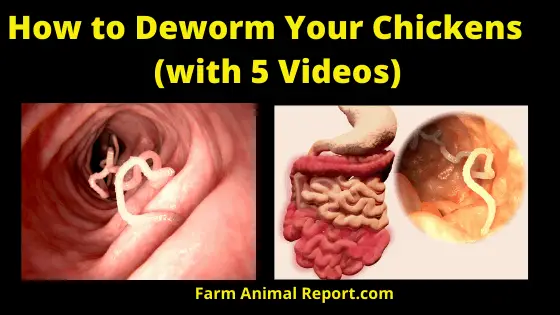As a general rule Worms, parasites are a major issue best thing you can do is. 1) Do feed chickens properly. 2) Limit treats to 5% of their daily diet and don’t add ingredients to a quality commercial ratio because doing so dilutes the carefully calculated nutritional balance in the feed. 3) Don’t throw chicken feed or treats on the ground where it can become contaminated with parasite eggs, that have been passed by Feces. 4) Don’t overcrowd chickens in a coop or run. 5) Do keep feeders clean.6) Do provide clean, fresh water daily and keep containers clean. 7) Consider using a poultry nipple drinker.8) Do keep a clean coop. Don’t allow droppings to accumulate. The use of a dropping board underneath roosts catches the night’s droppings, keeping litter cleaner, longer, and provides an opportunity to observe abnormalities such as worms.9) Do keep stress to a minimum.10) Do provide flock with a sunny, well-drained yard.
How to Deworm Your Chickens
How to Deworm Your Chickens – Chickens Like all farm Livestock, especially for Homesteads and backyard Farmers. Are susceptible to Parasites. Parasites come in two forms. Internal Parasites that live and move through Your Chickens System. External Parasites attach themselves and feed off of their host. Your Chickens. Both Types have negative Health effects on Your Chickens.
Before going toward to know about the dewormers or methods of deworming, you should know about the worms which are infesting in chickens. This Article explains Internal Parasites that inhabit Chickens.
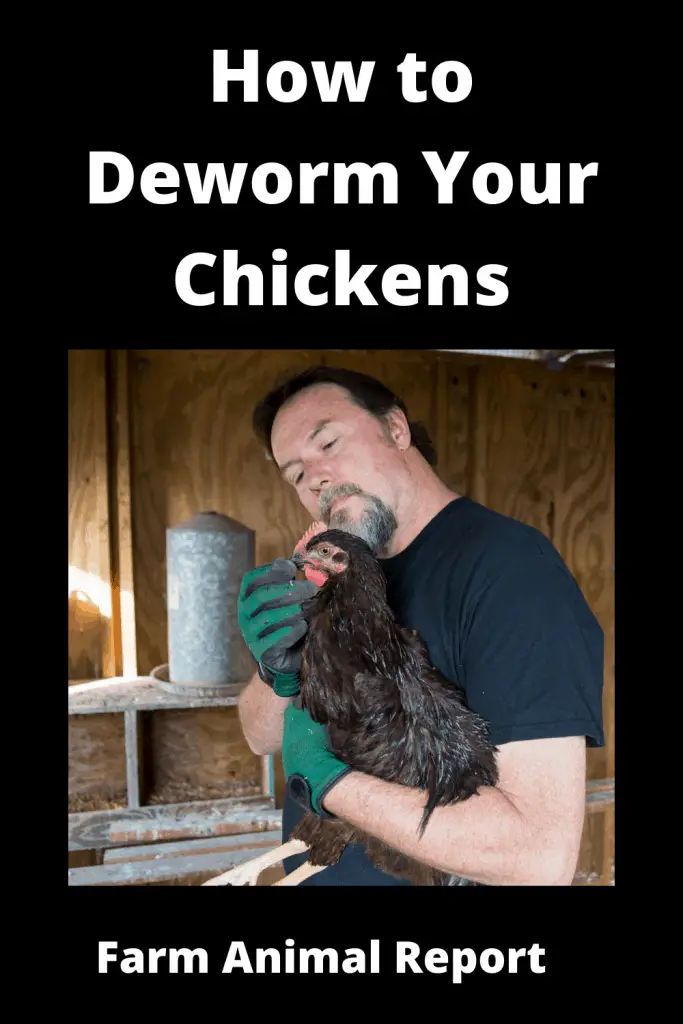
Internal Parasites Which Present in Backyard Chicken:
A parasite is an organism and gains an advantage at the expense of that organism. Usually, low levels of infestation do not cause a problem and can be left untreated.
12 Ways to Make Money by Chicken Farming—Extensive Guidelines for Chicken Farmers
Clinical Signs of Internal Parasitic Infestation
There are the following clinical signs of parasitic infestation:
- Unthriftiness
- Poor growth
- Feed conversion
- Decreased egg production
- In severe cases, death.
- Parasites can make a flock more susceptible to disease or worsen a current disease condition.
Worms:
Roundworms
- Ascaridia galli, the common roundworm of chicken:
- The adult site free within the small intestine lumen and remain there by ‘serpentine’ swim like motility.
- The adult female initially lay up to 100000 eggs per day (EPD). The females are 8-11 cm long and white; the males are somewhat shorter (4-8 cm ).
- The adult female may lay eggs for several months. The eggs are laid more or less continuously. However, some studies have shown a peak in fecal egg count in the afternoon (that observation may be related to the movement of the chicken and eating and thus the evolution of ingesta and parasite eggs, etc., along the gastrointestinal tract, rather than an inherent property of the parasite).
- The eggs are voided in the droppings and thus discharge into the environment, they embryonated in the first few days, then undergo molt until larva stage 2, all within the egg still. This is the infective stage reached after about two weeks in the environment. The larvated egg will survive moderate frost, and under ideal conditions in a litter will remain infectious for a year or more. The role of earthworms, ants, flies, etc. for transmission of the infective larva is minimal.
- Upon ingestion by a new host chicken, the larva is released from the egg in the gizzard.
- The larva undergoes a series of molts in the proximal small intestine. With the final larva stage burying the proximal part of its body within the mucosa, it will cause some damage. A heavy burden will cause intestinal obstruction. The parasites utilize nutrients in the feed that the host has ingested.
- On extremely rare occasions, adult ascarids may be found in the abdominal cavity, or within a hen’s egg. This comes about because an adult ascarid has displaced, probably partially paralyzed following treatment. Within the cloaca, it recommences movement and then ascends the oviduct. If it encounters the next hen’s egg being formed and descending the oviduct, the ascarid may become an entrapped customer.
Caecal Worm – Heterakis Gallina,
- Heterakis gallina, the caecal worm:
- The adult female sits free in the caecal lumen but lays close to the mucosal surface. Females are up to 1.5cm, and males are shorter. Mature females may lay about 500 EPD ( maximal is 800).
- Eggs void in the droppings, and they embryonated in the environment; over the following two weeks, they undergo molt to L2, which is the infective stage.
- Alternatively, the larvated egg can eat by the earthworm wherein the larva is released and remains in the earthworm for several years.
- Upon ingestion by a new host, the L2 larva is released, moves down the small intestine and enters the caecum.
- The larvae undergo a series of molt and are embedded deep within the caecal crypts rather than specifically burrowing into the mucosa.
- 50 adult Heterakis was a significant burden.
Hairworms – Capillaria
- Capillaria, excellent hairworms:
- Capillaria annulata is a parasite of the crop and esophagus; C. obstinate of the small intestine.
- These are small, beautiful, thread-like nematodes and are not host-species specific.
- C. annulata can utilize earthworms as an intermediate host. The life cycle is relatively direct and quick: from eggs laid to the infective larva in the environment is a little more than a week; from ingestion of infected worm to production of fertile eggs is under four weeks.
- The parasites burrow into the mucosa and create significant tissue damage leading to localized inflammation and congestion.
- Infection can cause morbidity, and sometimes death.
- The adult parasites are extremely difficult to observe in affected tissue.
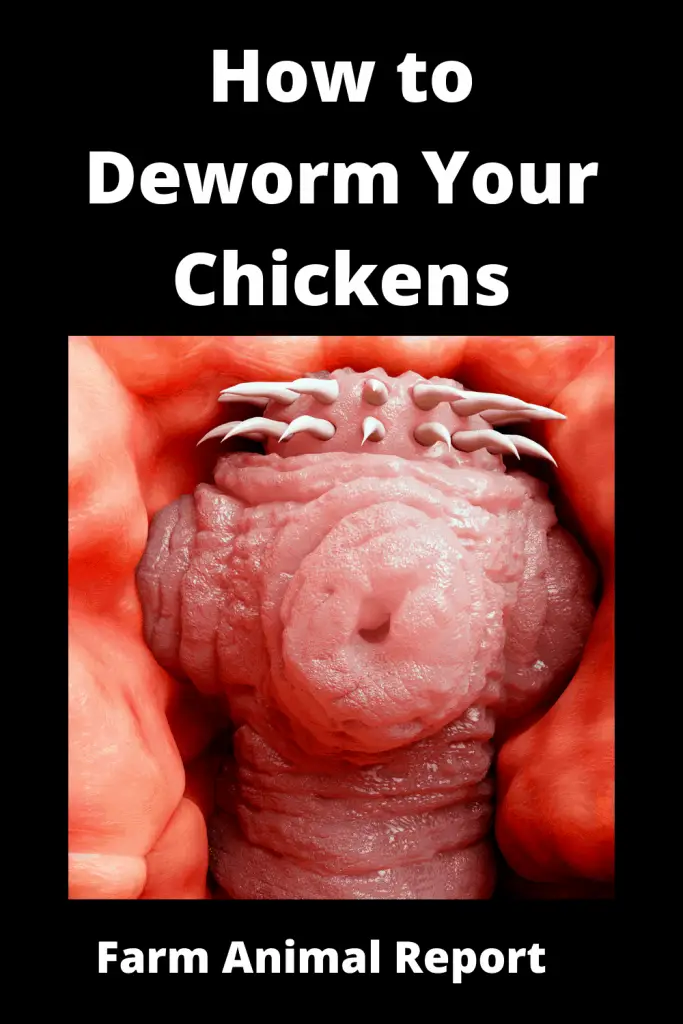
Tracheal / Gapeworms – Seamus trachea
- Seamus trachea (tracheal worms, gapeworms):
- This occurs in Australia but does not appear to be a significant problem in free-range poultry thus far.
- Adult parasites find deeply attached within the trachea and full of blood.
- Following the ingestion of the infective larva, they have an intricate migratory pattern within the host.
- They have a wide variety of final avian hosts like chicken.
- And the larva can utilize intermediate hosts such as earthworms, slugs, and snails, or spread by direct fecal-oral ingestion of infective larva.
- Several affected birds have open-mouthed breathing due to respiratory distress, hence ‘gapeworm’.
- The adult female is about 2cm long and permanently joined with a smaller male (6mm).
- Eggs are laid into the tracheal lumen, coughed up, swallowed, and passed out in the droppings.
- The eggs are typical strongylid-type.
Eye Worms – Oxypirua mansoni
- Oxypirua mansoni (eye worm):
- Affects a wide variety of birds, including poultry. Sometimes, it refers to the tropical eye worm.
- It is a spiruroid nematode; the adult female is under the nictitating membrane of the eye and lays embryonated eggs which are swallowed, and then hatch in transit through the gut.
- The larvae require a cockroach as an intermediate host. They have reported in Australia, but the significance in free-range poultry, thus far, is uncertain.
Tapeworms – Cestodes
Cestodes (Tapeworms):
- Davainea proglottina:
- Davainea proglottina is a very small tapeworm affecting the duodenum of chickens. It requires an intermediate host of snails and slugs.
- The tapeworm comprises less than ten proglottid segments and is <5mm long, and deeply embedded in the duodenal mucosa.
- Observing these grossly, with the unaided eye, is almost impossible.
- The adult D. proglottids In the chicken duodenum can persist for a year.
- Heavy infestation may result in some cases there may be paralytic-like signs and weakness, hence the suspicion in some earlier reports of a neurotoxin (not thus far confirmed).
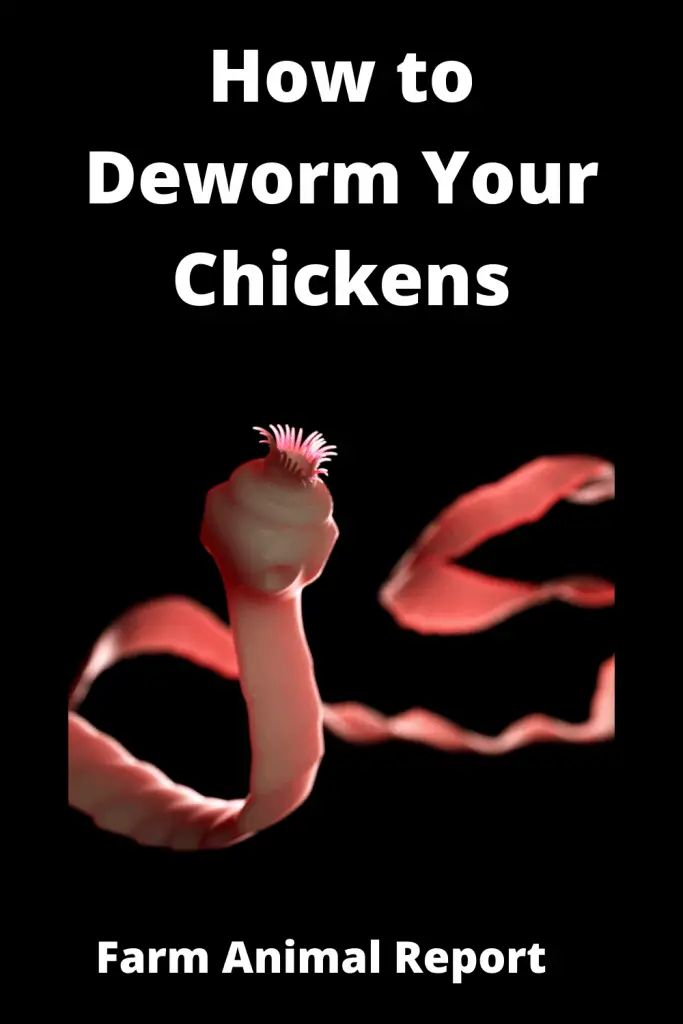
Choanotaenia infundibulum:
- Choanotaenia infundibulum:
- Choanotaenia infundibulum is a large (20 cm long), vivid white, tapeworm inhabiting the proximal small intestine.
- The intermediate hosts are house flies and beetles.
- Pathogenicity is related to intestinal obstruction by multiple parasites within the lumen.
Raillietina cesticillus:
- Raillietina cesticillus:
- Raillietina cesticillus is another giant tapeworm (15cm) that utilize beetles as an intermediate host, whereas R. echinobothridia (>30 cm) use ants.
- Infection with the latter results in large intestinal wall nodules up to 6 mm in diameter, associated with the attachment of the parasites.
Diagnosis of Internal Parasites in Chickens:
There are the following methods for the diagnosis of parasites in poultry:
Fecal Egg Count (FEC):
- Fecal egg count (FEC):
Fecal egg count is available commercially through private and government veterinary laboratories. And it is possible for owners, managers, or staff to learn the procedures and to recognize parasite eggs so that testing can do on-farm.
- Fecal egg count using the modified McMaster method is a well-recognized procedure for diagnosing and interpreting parasite burdens, particularly in sheep.
- A fixed weight of feces is mixed with a fixed volume of dilute, and the mixture examined in the chamber of known amount on a slide under a microscope.
- The number of parasite eggs is counted, and then a calculation is performed to give the number of eggs per gram of feces.
- Different diluents are used for different parasites of concern, but saturated salt appears to be best for most nematodes and coccidian ova.
- It must be remembered that reverse peristalsis is common in chicken intestines with minor backward waves every 15 minutes. And a significant expulsatory wave every hour producing an intestinal dropping with ingesta fragments etc. surrounded by a curtain of precipitated urate crystal from kidneys; several times per day, the caecae are emptied producing a relatively homogenous semi-fluid dropping.
- Fecal egg counting does not give a reliable indication of cestode burdens as tapeworm segments are released as separate packets.
- Egg production by an adult female Ascarid can reach 100,000 EPD, whereas adult Heterakis rarely exceeds 800 EPD.
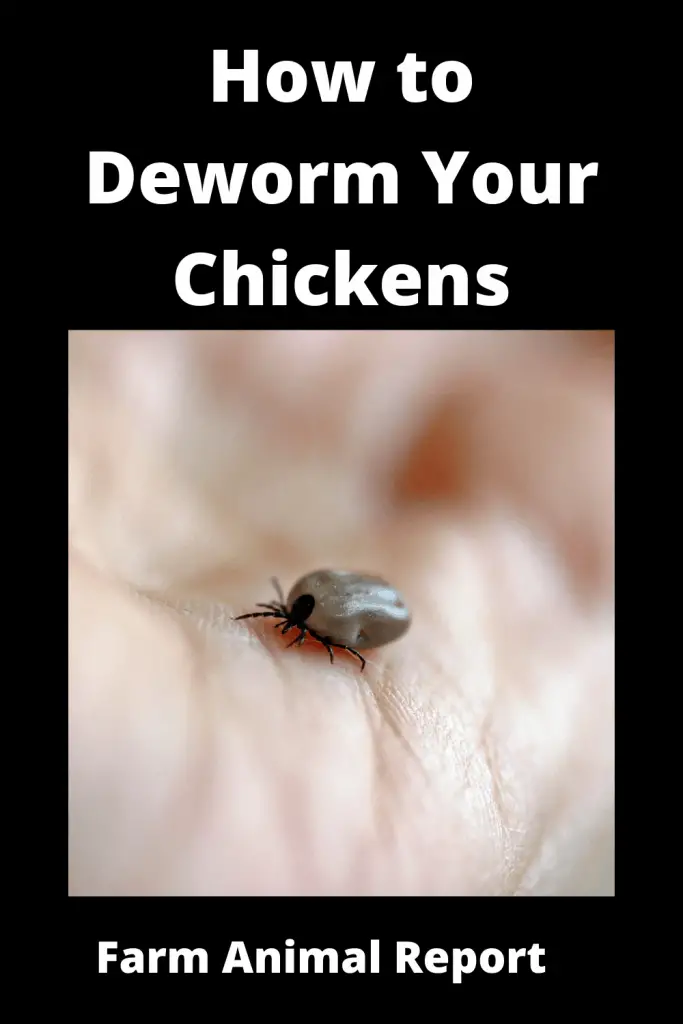
Necropsy – Examined at Autopsy
- Necropsy:
Birds can be killed, and their intestinal tract examined for adult worms.
- Ten adult Ascaridia or 50 Heterakis was a significant burden in an adult hen.
- Adult Heterakis are small and can be easily overlooked.
- Adult capillaria is very small and beautiful and buried in the mucosa, so are rarely observed on naked-eye examination, but fecal examination should indicate if there are adult female worms producing eggs.
- Large adult tapeworms can be seen with the naked eye, but species such as Davainea proglottina are tiny and buried deep between duodenal villi.
- Individual proglottids may be observed in the droppings.
How Can You Treat your Backyard Chickens with a Parasitic Infestation?
Chemical Therapy Teatment / Always Twice / Adults / Eggs
Select one product that targets the type of worm plaguing your chickens and always treat the flock twice to paralyze and evict the adult parasites and again in 7-14 days to eradicate the worms that have hatched from eggs since the first treatment. Clean the litter in the coop and run after the second treatment.
There are the Following Dewormers Used for Treating the Worms in the Chicken:
Check with Your Local Vet – For Uses of Chemicals
Check How Long you Cannot Eat Meat / Eggs After Worming
Fenbendazole 10%:
- Fenbendazole 10%:
Fenbendazole 10% treats threadworms, roundworms, cecal worms, and gapeworms.
Ivermectin 1%:
Repeat treatment in 10 days.
- Ivermectin 1%:
Use to treat the roundworms, threadworms, tapeworms, plus many external parasites.
Eprinomectin:
Repeat treatment in 14 days.
- Eprinomectin:
It is used to treat roundworms, threadworms, tapeworms, plus many external parasites.
Albendazole:
0.1ml/kg body weight topically.
- Albendazole:
Treat tapeworms, roundworms, capillary worms, cecal worms, and gapeworms.
Natural dewormer used:
Garlic:
- Garlic:
This can be given fresh and finely chopped, or you can give dried flakes or powders. Whatever form you choose, you will want to treat with an equivalent amount of one to two cloves per hen per day for ten days.
Grated carrots
Finely chopped onions
Elder leaves
Wormwood
Rue
Hyssop
Pumpkin:
We generally throw a pumpkin a day into our animal yards for a couple of weeks. They enjoy all parts of squash, and the seeds are a natural worm repellant.
All These Natural Foods have anti Parasitic Properties.
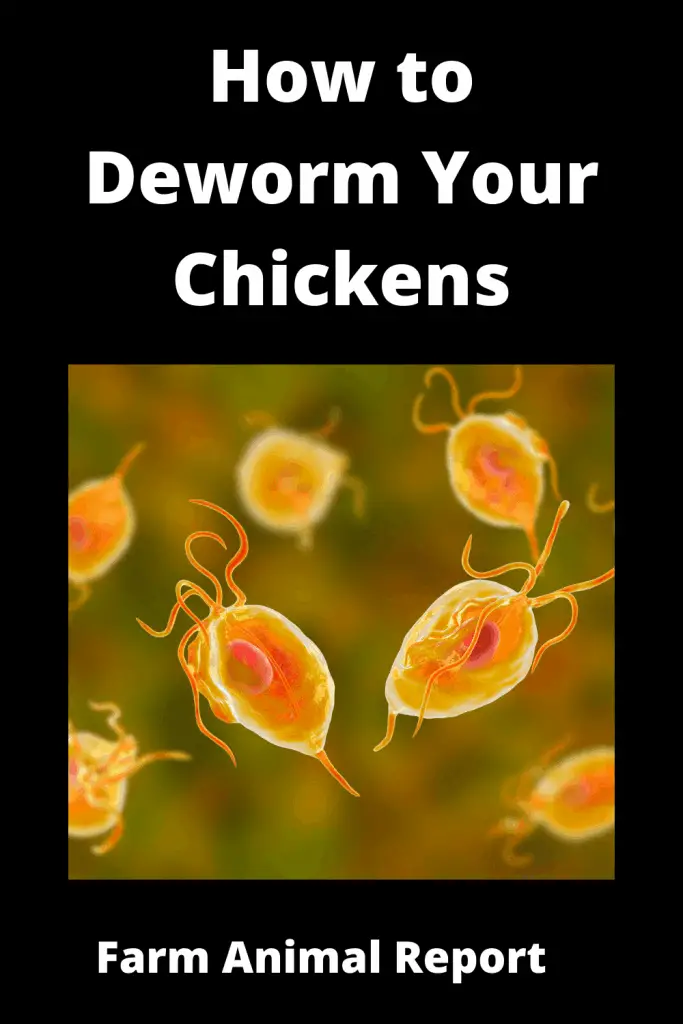
Cucumbers:
- Cucumbers:
The seeds are the most valuable for deworming, but tossing a few cucumbers to your chickens here and there throughout the summer can be a delicious snack with an added benefit.
How can you Prevent and Control the Worms in your Homestead Chickens
There are the following methods to control and prevention of worms:
- Do feed chickens properly. Limit treats to 5% of their daily diet and don’t add ingredients to a quality commercial ration because doing so dilutes the carefully calculated nutritional balance in the feed.
- Don’t throw chicken feed or treats on the ground where it can become contaminated with parasite eggs, that have been passed by Feces.
- Don’t overcrowded chickens in a coop or run.
- Do keep feeders clean.
- Do provide clean, fresh water daily and keep containers clean. Consider using a poultry nipple drinker.
- Do keep a clean coop. Don’t allow droppings to accumulate. The use of a dropping board underneath roosts catches the night’s droppings, keeping litter cleaner, longer, and provides an opportunity to observe abnormalities such as worms.
- Do keep stress to a minimum.
- Do provide flock with a sunny, well-drained yard.
- Do rotate pasture/pens/yards periodically.
- Do remove coop and pen litter and regularly replace to break the parasite’s lifecycle.
Chicken / Poultry Breeder Associations
| Rabbit Association | Location | Link |
|---|---|---|
| US Poultry & Egg Association | United States | USPA |
| American Poultry Association | California | APA |
| Ohio Poultry Association | Ohio | OPA |
| National Chicken Council | United States | NCC |
| British Poultry Council | United Kingdom | BPCE |
| Poultry Club of Great Britain | United Kingdom | PCGB |
| Association of Poultry Breeders in EU | Europe | AVEC |
| Australian Chicken Meat Federation Inc | Australia | ACMF |
| Australian Poultry Hub | Australia | Poultry Hub |


